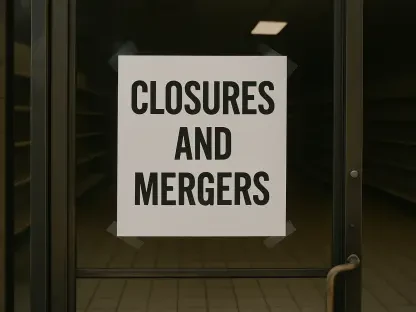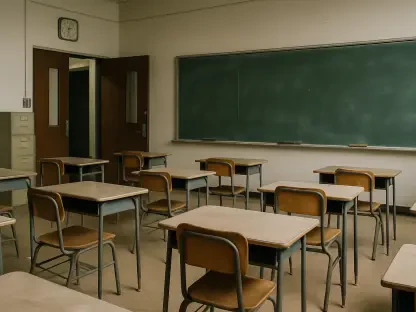In a time when educational systems across the nation grapple with staffing shortages and financial constraints, the Cedar Rapids Community School District (CRCSD) in Iowa stands out as a beacon of hope by placing educators at the heart of its mission. With teacher turnover remaining a pressing concern nationwide, this district has adopted a people-first approach to address these challenges head-on, fostering an environment where staff feel valued and supported. By investing in innovative programs, personalized interventions, and strategic funding, CRCSD aims to not only stabilize its workforce but also build a sustainable future for its schools. The efforts reflect a broader recognition that the strength of any educational institution lies in the dedication and well-being of its educators, who shape the minds and futures of students every day.
Building a Supportive Environment for Educators
Investing in Staff Amid Financial Challenges
Navigating the expiration of federal ESSER funding presented significant hurdles for CRCSD, resulting in the tough decision to cut 200 positions district-wide. However, through careful planning and a commitment to prioritizing educators, the district managed to restore 99 of those roles while allocating an additional $2 million to create 59 new behavior-support positions. These roles have been instrumental in addressing classroom challenges, leading to a remarkable 23% decrease in physical aggression compared to the previous year. Furthermore, teacher turnover saw a substantial decline, dropping from nearly 20% to 12.5%, ensuring that every classroom began the academic year with a core teacher in place. This strategic focus on reinvestment demonstrates a clear understanding that supporting staff directly translates to improved student experiences and overall school stability, setting a powerful example for other districts facing similar financial pressures.
Personalized Support to Boost Retention
Beyond financial investments, CRCSD has implemented targeted programs to engage educators on a personal level, recognizing that retention often hinges on feeling heard and valued. The “Just-In-Time” intervention initiative stands as a prime example, offering 30 individualized check-ins with staff members to address their specific needs and concerns. Of those who participated, 28 chose to remain in their roles, underscoring the effectiveness of direct, meaningful engagement. This approach acknowledges that turnover frequently stems from personal reasons rather than professional dissatisfaction, highlighting the importance of cultivating a stable, caring culture within schools. By fostering trust and open communication, the district ensures that educators have the emotional and professional support necessary to thrive, reinforcing the idea that small, personalized efforts can yield significant long-term benefits in staff retention.
Shaping the Future Through Educator Development
Growing Talent from Within the Community
One of CRCSD’s most forward-thinking strategies involves nurturing future educators from within its own student body and staff through programs like Educators Rising, which engages high school students at Kennedy and Jefferson High in exploring teaching careers. This initiative sparks early interest in education while building a pipeline of passionate professionals. Additionally, the district supports career advancement for paraeducators and leaders, as seen in inspiring journeys like Susan Hester’s transition from paraeducator to second-grade teacher and Sean Neilly’s rise to Associate Principal via the Principal Pathway program. These stories of internal growth illustrate a commitment to providing opportunities for advancement, ensuring that talent is not only retained but also celebrated. By investing in its own community, CRCSD creates a sustainable cycle of development that strengthens the district from the ground up.
Honoring Dedication and Planning Ahead
The district also takes pride in recognizing the contributions of long-serving educators, such as Barry Wilson, who dedicated 53 years to education, and noting that 35% of its teachers boast over 12 years of experience. This reverence for commitment reflects a deep appreciation for the communal ties that bind schools to their staff and families. Looking forward, CRCSD continues to focus on recruitment by forging partnerships with higher education institutions and enhancing student-teacher placements to fill specialty roles like music and paraeducator positions. Retention efforts are bolstered by initiatives like the STARS program, mentoring opportunities, and clear career pathways designed to build confidence among educators. By maintaining a culture of care and prioritizing relationships, the district aims to sustain trust and ensure that its progress endures, paving the way for a resilient educational framework that benefits all stakeholders.
Reflecting on a Legacy of Progress
Lessons from a People-First Approach
Looking back, the strides made by CRCSD in reducing teacher turnover and enhancing classroom environments were rooted in a steadfast dedication to placing educators at the forefront of decision-making. The measurable outcomes, from a drop in turnover rates to the successful reinstatement of critical positions despite budget cuts, showcased how targeted investments and personalized support could transform challenges into opportunities. Each initiative, whether it was a mentoring program or a financial reallocation, contributed to a stronger, more cohesive school community that prioritized both staff well-being and student success.
Building Momentum for Tomorrow
As the district reflected on its achievements, the path forward became clear: sustaining this momentum required continued emphasis on recruitment, retention, and relationship-building. Exploring new partnerships and expanding career development programs emerged as vital next steps to address remaining gaps in specialty roles. By sharing these strategies and outcomes, CRCSD positioned itself as a model for others, proving that a focus on human-centered policies could create a lasting impact. The legacy forged through these efforts promised to inspire broader change, ensuring that education remained a cornerstone of community vitality for years to come.









